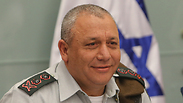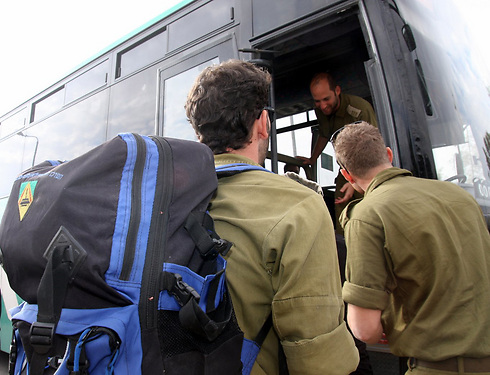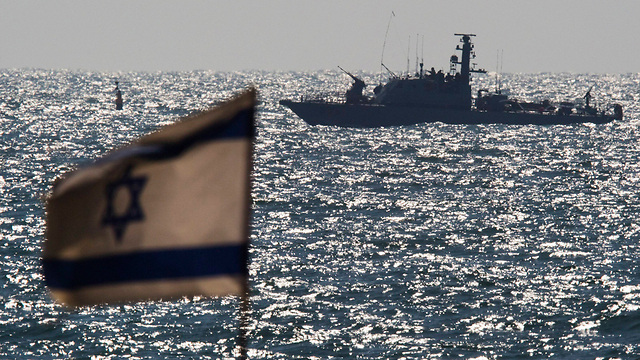
Upon taking office, Eisenkot began making changes in the army. The main changes will affect the IDF in the next five years if the new Gideon Plan is approved. These are its main objectives:
- Dismissing another 2,500 professional soldiers.
- Reducing the commanders' age: Regiment commanders will be 32 years old instead of 35-37; the brigade commanders' age will drop from 45-46 to 40-42.
- Cutting down the reserve force by 100,000 soldiers, cutting down artillery brigades and light infantry brigades. The reserve soldiers who will remain will be trained, equipped and qualified for a war.
- Cutting down the commands by about 6%.
- Shutting down systems and cancelling redundant positions: Cutting down and adjusting systems which are not at the core of the IDF like the Education Corps, Military Rabbinate, Chief Reserve Officer, the chief of staff's advisor on women's affairs, Army Radio and the Military Censor, combining the Northern Corps commander with the Ground Forces command.
- Establishing a cyber wing.
- Purchasing surface combatants and introducing a submarine towards the end of the year.
- Purchasing F-35 planes, introducing an unmanned aircraft lineup and multi-layer protection.
'Each unemployed reserve unit saves NIS 70 million'
A senior officer elaborated on the main objectives of the new plan, which aims to adjust the army to the current threats.
"We have reduced the tank forces order by 75% since 1985, and reduced the number of warplanes and surface combatant by 50% since the 1990s," he said. "The number of professional soldiers went up by 8% in the past 30 years. We will shut down the reserve Home Front Command brigades and a few other artillery units, and discharge 100,000 reserve soldiers. We will implement a 6% in all headquarters. In the General Staff this is already being implemented by dropping four major-general positions."

The multi-year plan also includes an increase in the number of brigades for routine security measures. This way, the officer noted, the summons to operational activities of reserve regiments will be reduced. "Every reserve regiment which doesn’t appear on the annual operations graph 'saves' NIS 70 million (about $18 million)," he said. In the next six month, not a single reserve regiment will be summoned to operation activity.
The plan was concocted by six General Staff teams led by officers in the ranks of brigadier-general and major-general. They outlines the patterns of training, manpower and strategy according to which the IDF will be managed in the next five years, hoping that this time the multi-year plan will be approved by the government.
'Professional soldiers at the bottom of public service'
The Locker Report, prepared by a governmental committee led by Major-General (res.) Yohanan Locker which was appointed to look into the defense budget, was submitted to the prime minister and defense minister about two weeks ago for their comments ahead of its submission to the government's approval.
The report raised concerns in the IDF due to a significant cut in the pensions of most career officers and the plan to dismiss thousands of them. IDF chief Eisenkot had a lot of criticism against considerable parts of the report, and he therefore presented the IDF's senior command with a multi-year plan.
One of the most explosive issues in the Locker Report and the Gideon Plan has to do with the manpower issue and the pension terms of professional soldiers. The Locker Report asserts, according to recent reports, that the combat professional soldiers, such as brigade or regiment commanders and squadron commanders, should be separated from the ones stationed in the home front.
The report suggests that the combat soldiers will continue to enjoy a bridging pension upon retiring from the army (in their early 40s) until the retirement age (67), while those in the home front are offered to retire from the army from their mid 30s to their early 40s for a grant of NIS 600-800,000.
This recommendation angered professional soldiers, who are expected to lose 40-60% of the pension funds they were promised.
"The meaning of Locker's outline is that 3,300 majors, for example, will be told tomorrow morning that everything they were told they would receive at the age of 39 won't happen. Doing something like that is like shooting a bullet between one's eyes in terms of the IDF's abilities in the future. It has a high risk potential to the state's security," a very senior officer told reporters.
"The IDF will be discriminated against compared to the other emergency organizations and government ministries, where the bridging pension will continue. The professional soldiers will be placed at the bottom of public service."
'IDF is State of Israel's insurance policy'
According to the officer, the proposal formed by IDF Personnel Directorate head Major-General Hagai Topolansky in the Gideon Plan states that only one in 10 soldiers will retire at the IDF retirement age. In addition, the ages of officers in the medium ranks will be reduced from 35-37 for a regiment commander today to 32.
"We will leave high-quality professional soldiers in the intelligence and technology fields and build a service plan for those who want to come to the army for a short while, for example from the age of 28 to 35 with a release grant. We will make positions in the different systems, such as the Military Advocate General, available to citizens, and continue with the plan from two years ago to cut more than 5,000 professional soldiers. The key is that 1,000 retiring professional soldiers 'save' NIS 1 billion in the multi-year plan."
The senior officer slammed recent publications about professional soldiers' salaries. "This attack harms the army's main objective – the public's trust in the IDF. Whoever thinks that the Klos C ship was raided by only 20 fighters is wrong. There are thousands of other soldiers in the home front who the operation wouldn't have succeeded without.
"Cancelling the pension of anyone who is not a brigade or regiment commander, or telling them to continue until age 42 and leave without a bridging pension is a joke. Who will he compete against in the labor market at this age? A young 28-year-old?
"How will we activate the entire Air Force within hours and strike thousands of targets a day? The army is not a high-tech company which aims to make a profit, but the State of Israel's insurance policy."
'Shortening service is unrealistic'
According to the officer, another part in the Locker Report has to do with shortening military service to only two years, after the army already began shortening the service to 32 months in order to reduce the order of battle by one-third.
"It's baseless. It simply doesn’t make sense in the current security reality, and not even in 10-20-30 years," he said. "Whoever thinks the youth can enlist for two years is experiencing a reality of Switzerland here."
The IDF's goal is that the political echelon will approve the multi-year plan and determine a uniform index-linked budget for the army according to it. If the leaks from the Locker Report are accurate and different budgets from the defense budgets will indeed be split, the IDF aspires to receive a net budget of NIS 30 billion a year, about NIS 1 billion less than the average in recent years.
This refers to the army's budget only, covering its routine existence (medicine, fuel, food, uniform, transport, etc), the soldiers' salaries, training and arming as part of major purchase contracts. "This way, the total defense budget will range from NIS 60 billion to NIS 64 billion a year," the officer estimated.
'Iran will remain the IDF's main task'
The officer also provided a first comment from a senior military official on the nuclear agreement with Iran and its effect on the army in the coming years: "Our working premise is that the IDF will set its power in motion in the next multi-year plan. Iran will remain the IDF's main task, as defined since 2006, through the monitoring of their centers of activity by the Military Intelligence Directorate.
"This mission will require aerial and intelligence resources. Our working premise is that there will be a secret Iranian pattern of action, and there is no doubt that the removal of the sanctions will allow Iran to invest more money in the region, beyond the $4-5 billion it is investing today."
In the Lebanese and Syrian context, the officer noted that "Hezbollah is in the greatest breaking point since its establishment, after losing 1,300 of its members who were killed and 5,000 others who were injured.
"About a month and a half ago, the IDF stopped bringing injured from the Jabhat al-Nusra organization into Israel for medical treatment, and even before that there were only few cases. We haven't helped them, neither with one shekel nor with one bullet."



















